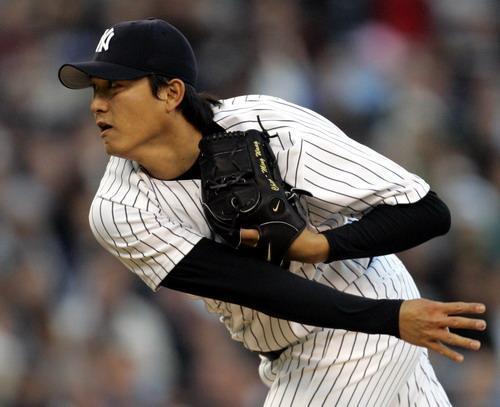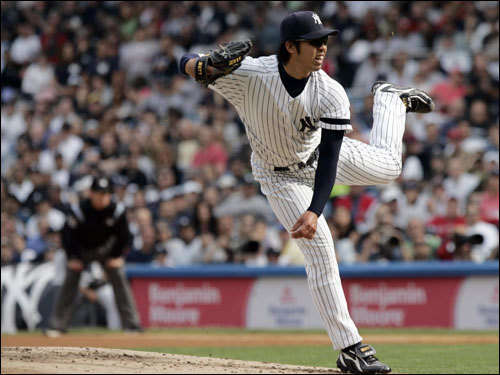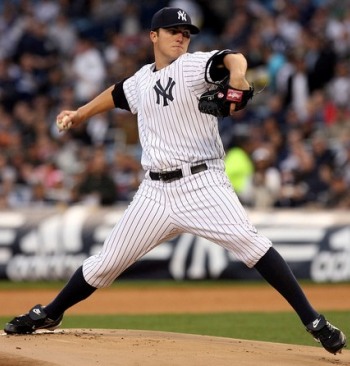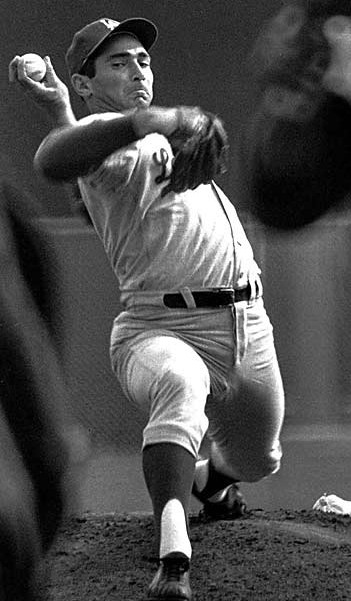From the Iron City comes this bit of disturbing news:
Via ESPN.com, the story from the Pittsburgh Post-Gazette is that the Pirates are trying to re-sign its double play combo, which is a particular challenge because neither player will reportedly agree to a deal unless he's sure that the other will, too.The Pittsburgh Pirates aim to keep shortstop Jack Wilson and second baseman Freddy Sanchez.
With Major League Baseball's July 31 trade deadline looming, the middle infielders were approached recently by the Pirates about multiyear contract extensions, according to the Pittsburgh Post-Gazette.
It's only natural that the few fans left in Pittsburgh would be wondering about the Pirates, who have already traded away Nyjer Morgan, Sean Burnett, Eric Hinske and most notably Nate McLouth this year and Jason Bay, Xavier Nady and Damaso Marte last year, among others. There was a lot of coverage of the frustration of the fans and especially the players, including Wilson himself, when the second trade was made last month, though Wilson later apologized for that.

As a fan, or even player, it's understandable why people might be put off by these moves. After all, these are the players you've been watching for years, in some cases, players you know, players who may have done good things in your favorite team's uniform, and from whom you always hoped for more. Nate McLouth was an All-Star and won a Gold Glove! Bay was the Pirates' franchise player! Nady was hitting .330 at the time! Nyjer Morgan was...I dunno...decent!?
But being trades, you have to examine what the Bucs got in return for all their trouble. The Nady trade got them four prospects, including 20-year old Jose Tabata, who could still be a very good player, a current member of their starting rotation in Ross Ohlendorf and a bullpen cog in Jeff Karstens. The Jason Bay trade netted them thirdbaseman Andy LaRoche, who's got a solid minor league record and is only 25, plus three other prospects.
Nate McLouth, who was overrated, about to get expensive and blocking top prospect Andrew McCutchen (who's been very good, by the way) got them three more prospects. And none of the guys traded away, other than Bay, is a star or is likely to become one. For that matter, even Bay hardly qualifies as a "star", but he's closer than the rest were.

This is a team that has not had a winning record since 1992, that has not finished higher than 4th place in its division in a decade, that has averaged 95 losses for the last three years and is again on a pace to finish last in the NL Central. They do not need to be paying millions of dollars to guys like McLouth and Nady, who in their career years only improve the club by about 4-5 wins compared to a replacement level guy.
So what do they want with Wilson and Sanchez, who appear to be 1-2 win players, at best?
Jack Wilson is one of the better defensive shortstops in baseball, I'll give you that. John Dewan's +/- metric regularly rates him between 10 and 30 plays better than an average shortstop, and he's +20 this year in just over half a season.
But he's a below average hitter, even for a shortstop. The MLB average for shortstops this year is .266/.322/.383 while Wilson is hitting .270/.302/.402. The OPSs are almost exactly the same, and would suggest that Wilson is at least mediocre, until you take into account that OBP is more important than slugging percentage. Recognize, too, that Wilson is already 31 years old, past his prime as a hitter, and likely only to plateau or decline from here on out.

The Pirates have him under contract for $7.4 million, making him the highest paid player on the team. They have an $8.4 million option for 2010 with a $600,000 buyout, which would seem to be the smart route, but GM Neal Huntington is talking about signing Wilson to a contract extension. Unless that extension includes voiding the 2010 option and paying Wilson something like $2 million a year, I don't see how the Pirates benefit from any such deal.
Sanchez is sort of the anti-Wilson, as he's an above average hitter for a secondbaseman but a poor defender. The MLB average for second basemen this year is .270/.335/.413, for a 748 OPS. Sanchez is hitting .316/.356/.478, slightly but not incredibly above his career average. Depending on whose numbers you want to use, he's either dreadful or just bad.
His Zone Rating is 19th among MLB secondbasemen this year. Baseball Prospectus measures him as -1 FRAA this year, after a -6 mark last season. The Hardball Times ranks him 8th in RZR. Fangraphs ranks him 7th in UZR/150. Bill James Online has him as -6 plays, and -2 runs, i.e. below average, but not severely so. His bat makes up for that, but because so much of his value as a hitter is tied up in his batting average, which tends to be a volatile commodity, if he slips to being a .285 hitter instead of a .315 hitter, suddenly he's below average overall.
Don't forget, too, that Sanchez is also in the plateau/decline phase of his career as a hitter, being only a week older than Wilson is. And given that much more of his value as a player is tied up in his hitting abilities, the erosion of those abilities will affect his value that much more significantly.
So these two guys, two players who are just slightly above average and likely to soon slip even from that modest pedastal, these are the guys that Neal Huntington is talking about locking up for years to come.
Or is he? The story out of the Pittsburgh newspaper is that they're trying to extend the two players, but when you look at the quotes attributed to Huntington, they don't necessarily imply what the Post Gazette reporter Dejan Kovacevic suggests.
"I think it [trading Wilson and/or Sanchez] would be less than an ideal situation. Jack, obviously, is playing great defense. Freddy is an All-Star on both sides of the ball. It would be tough to replace both, no question."Well, that sure sounds like a guy who doesn't want to lose these players, right? But wait, there's more.
"But, as an organization, we can't be held hostage to fear of replacing. We like our ability to be creative. We feel like we could go out and find adequate replacements."Adequate. Replacements.
Given that these two are just barely more than adequate as slightly above replacement level at their respective positions, his words seem particularly apt, don't you think? And then, Huntington said this:
"Obviously, the easiest thing would be to keep them here. If we can't do that and we get the right trade, it's something we have to do."The easiest thing, but not necessarily the best, or even the thing they'll actually do. Sure, the easiest thing is to keep driving that car you already have instead of going to shop for another one. You know its quirks, it's a known commodity for a known cost. Granted, it's not terribly confortable and it's got some issues, like the smelly upholstery and the rusty gas tank, but it's mostly reliable.

Still, it's bound to break down one of these days, but car shopping is a pain in the butt, and you'd rather just deal with what you've got. It's easier that way. But in the back of your mind you know that eventually you're going to need another car, and it would be better to get some trade-in value (see what I did there?) for what you have before you run it into the ground.
Kovacevic goes on to say that both players may be willing to restructure the options on their current deals and even to take less money to stay together in Pittsburgh than they would get on the open market, and that this might help their chances of being given a contract extension.
I'll grant that Kovacevic was (presumably) there talking to Huntington in person, whereas I was not, and that perhaps therefore he has a better sense of the intent of Huntington's words than I do, just reading them off the internet. But it seems to me that a man smart enough to trade Nady and McLouth and Marte and bay at their peaks, or at least before they started to experience significant decline, is smart enough not to re-sign Wilson and/or Sanchez to some ridiculous contract.
Knowing that his team was going nowhere any time soon, he got value for other players via trade rather than either ponying up millions in arbitration dollars or losing them to free agency, and I fully expect that he'll do much the same thing with these two. Neither is a star, but neither is an organizational millstone yet, either. They're both decent enough players to serve a useful role on a team vying for a playoff spot, but if these two guys are the best paid players on the roster, then something is horribly, horribly wrong.
Both could have value for a contender, like the Giants or the Angels, who are each contending for a playoff berth but have gotten next to nothing from their secondbasemen. Or the Red Sox, who just designated Julio Lugo for assignment, and cannot be expected to fend off the Yankees while running Nick Green out to shortstop everyday.
Nick. Green.
Think about that.
Maybe Kovacevic is right, and they're planning on keeping these guys around for years to come.
Or maybe, he's being played, and Huntington is just talking up the value of these two so he can get a little more for them in the trade he's been planning to pull off all along anyway.
Or maybe, just maybe, Huntington plans to sign each of them to a more modest deal, without a no-trade clause, and then flip them to some contender, who would be able to use them for a couple of years instead of just a couple of months.
Stranger things have happened.





















